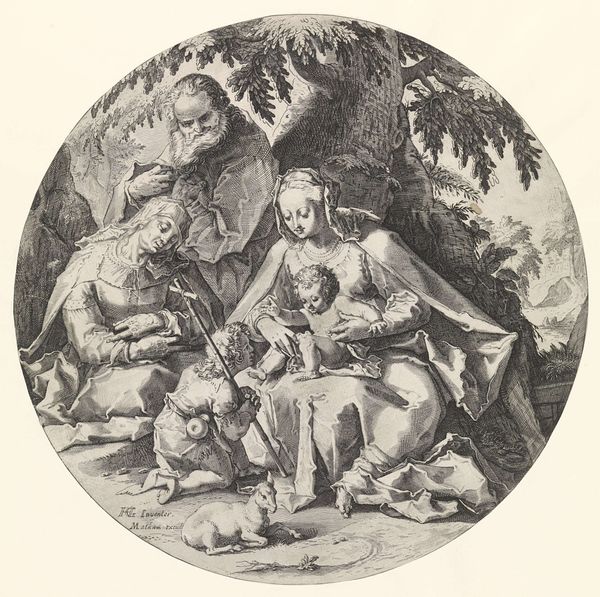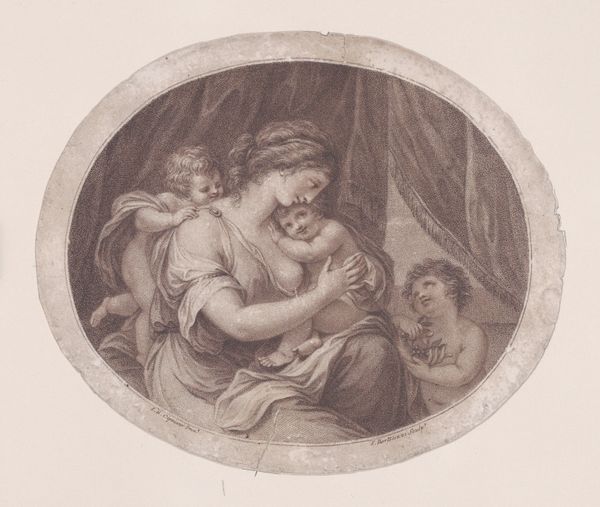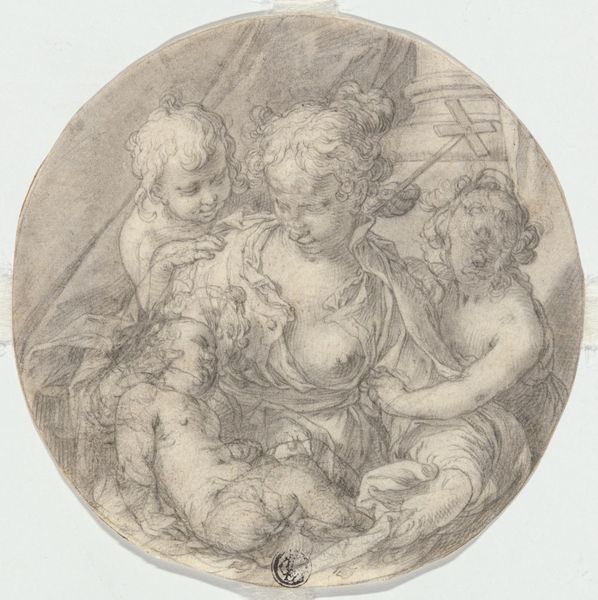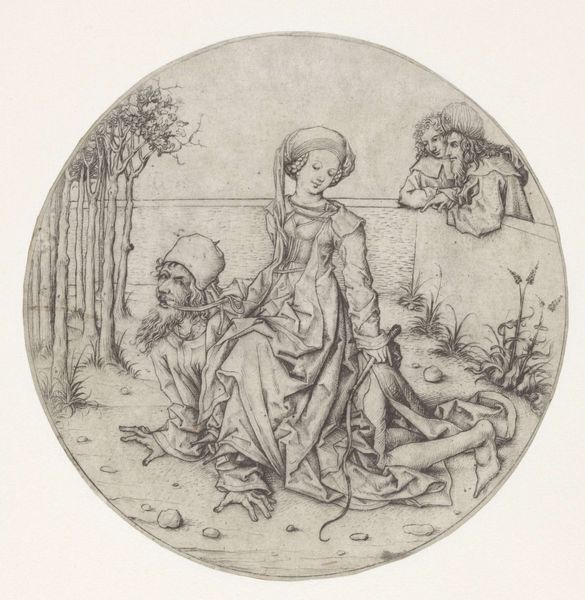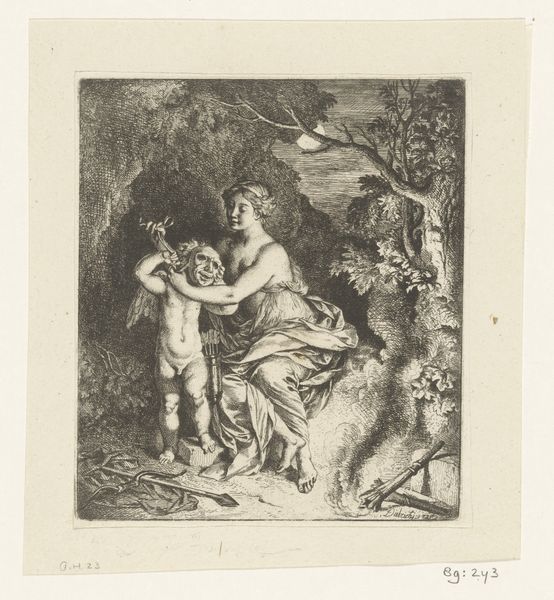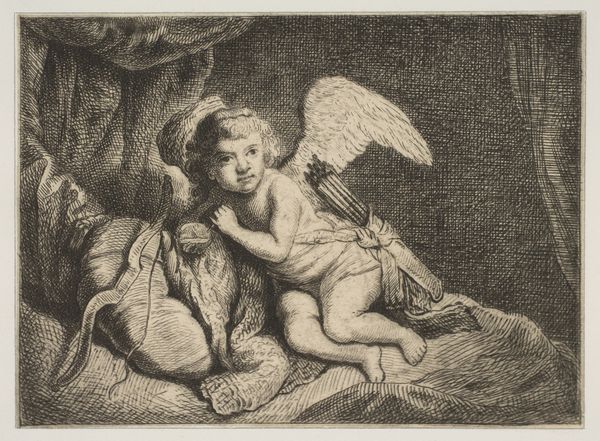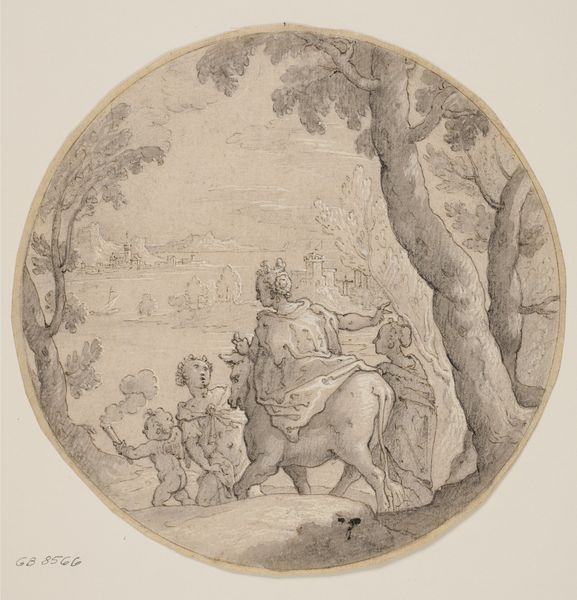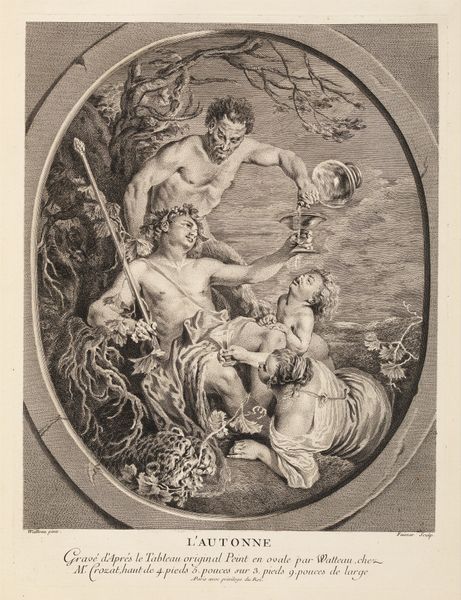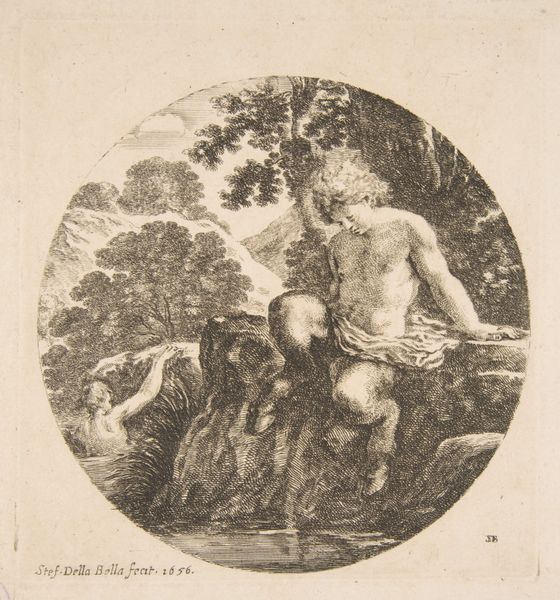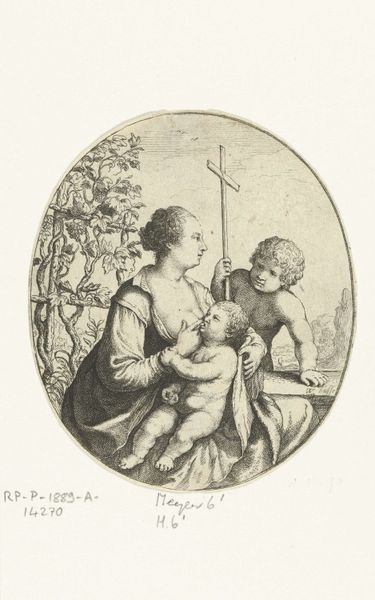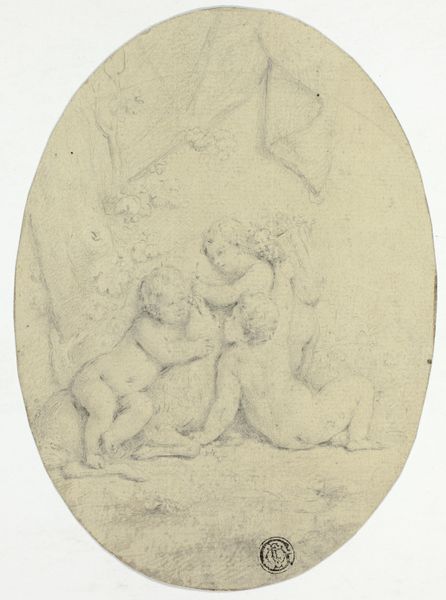
A female satyr breastfeeding an child to the right, turned towards the left, a satyr child on the ground to the left, from 'Landscapes and seaports' (Paysages et ports de mer, dans des ronds) 1639
0:00
0:00
drawing, print, etching
#
drawing
#
allegory
#
baroque
# print
#
etching
#
landscape
#
figuration
#
italian-renaissance
Dimensions: Sheet: 5 1/16 x 5 1/16 in. (12.8 x 12.8 cm)
Copyright: Public Domain
Curator: Stefano della Bella created this etching around 1639. It's part of a series called "Landscapes and seaports," and this particular print features a female satyr nursing a child, observed by another satyr child. Editor: It strikes me as unexpectedly tender, despite the mythological subject matter. The composition, contained within a circle, creates an intimate, almost private scene. And the detail, for an etching, is remarkable. Curator: Indeed. Della Bella was celebrated for his mastery of etching. It allowed for incredibly fine lines and details. But beyond technique, what's intriguing is how it engages with themes of fertility and nature, popular in the Baroque era. Notice how the wild, overgrown landscape almost cradles the figures. It implies a direct connection between the Satyr family and their natural surroundings. Editor: I'm drawn to the material implications here. The act of etching, using acid to carve into metal, then using that plate to reproduce an image, speaks to the increasing industrialization of art. Della Bella wasn't just making a drawing, but a multiple, something accessible and reproducible for a broader audience. What does it say that this method, a craft that enables distribution, is used to show a pastoral scene so disconnected from manufacture? Curator: That's a fascinating point. The idealized, almost Arcadian, depiction stands in stark contrast to the industrial means of its production. Della Bella's aristocratic patronage perhaps fostered this detachment, allowing him to romanticize rural life without engaging with its practical realities. I mean the themes it engages with go as far back to classical ones, almost suggesting this as a moment of personal triumph. Editor: Possibly. Or is he commenting on it in his own way, this connection of landscape and humans. The whole family and how each has a relationship to each other. Its quite intriguing how you might have someone thinking back so far as to the Renaissance, while also looking forward. Curator: An intriguing duality, indeed. It highlights the complex relationship between art, patronage, and societal ideals during this period. Editor: Absolutely. It shows that even an idyllic scene is built on layers of production and power.
Comments
No comments
Be the first to comment and join the conversation on the ultimate creative platform.
